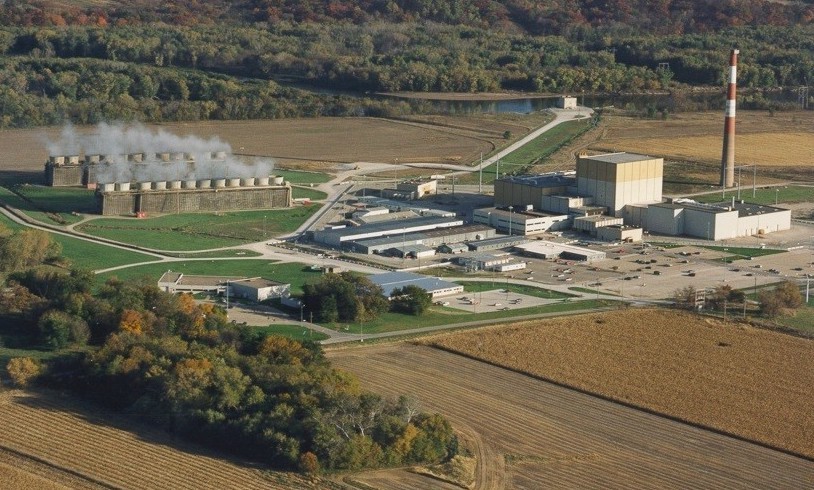To reach its climate goals, the Biden administration aims to extend the lives of U.S. nuclear reactors. But a new report finds regulators have not studied whether increasingly extreme weather could threaten the safety or viability of power plants largely built in the 1970s and 1980s.
By James Dinneen
On August 10, 2020 a powerful derecho windstorm blasted the Duane Arnold nuclear power plant in Iowa. Up to 130 mile-per-hour winds caused a power outage and knocked over the 50-year-old plant’s wooden cooling towers, which triggered an automatic shutdown of the reactor and a switch to backup generators to power its cooling system. The U.S. Nuclear Regulatory Commission (NRC) concluded the plant’s multiple layers of defense had avoided any risk of releasing radioactive material, but the reactor was never restarted. The plant had been slated to close, and its owner decided not to repair the damage.
“A weather-related event prematurely and permanently shut down the Duane Arnold,” says Jeff Mitman, a nuclear risk consultant and a former NRC engineer now involved in a campaign to highlight safety risks at aging nuclear plants. He points to Duane Arnold as an example of how such plants can be vulnerable to extreme natural hazards that may be exacerbated by climate change.
The country’s 54 nuclear power plants still in operation were designed to be resilient to numerous outside threats, including the most extreme weather-related events deemed feasible based on the historical record, and even beyond. But most plants were built more than 40 years ago, and a new investigation finds these plants may yet be vulnerable to unprecedented hazards fueled by climate change, at a time when many experts say nuclear power is needed to keep emissions from fossil fuels in check.
According to the report released earlier this month by the U.S. Government Accountability Office (GAO), the investigative arm of Congress, every nuclear plant in the country is located in an area where climate change is set to worsen flooding, heat, storms, wildfire, extreme cold, or some combination. However, it found that the NRC — which is responsible for U.S. nuclear safety — has not conducted the analyses necessary to know whether nuclear power plants are prepared for those changing conditions.
The report did not demonstrate that any plants are necessarily vulnerable to these hazards, which would require a plant-by-plant analysis. But it found the NRC has not adequately addressed whether more extreme weather could force plants to shut down or lower power output more frequently, or pose a safety risk.
